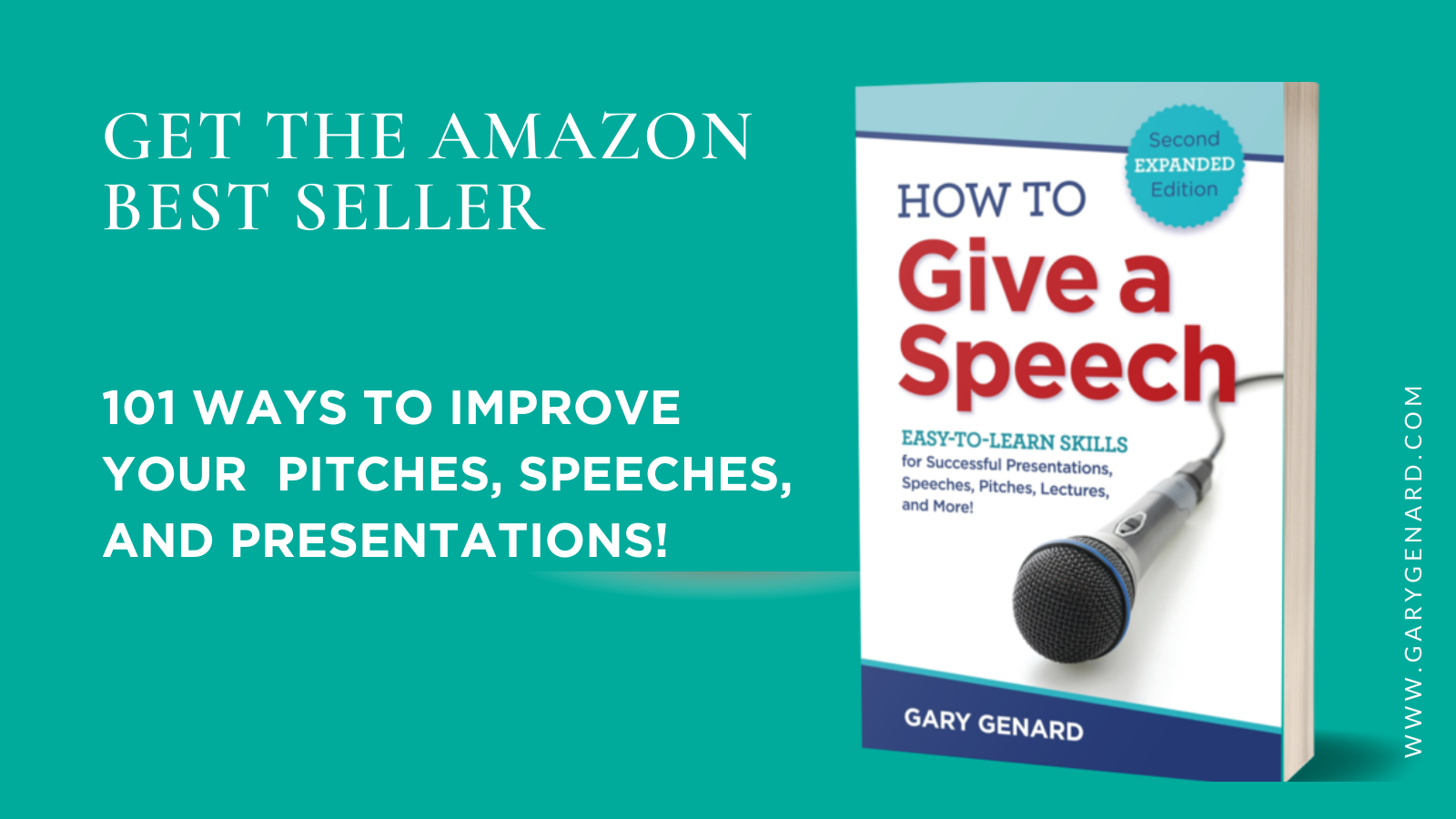Great business speaking doesn't depend only upon content. Or even a strong performance. Here's how to make every one of your presentations extraordinary.
Would you be surprised if a speech coach told you that content alone won't make your presentations memorable? Probably not, huh?
What about if that same performance coach said that even great stage presence won't make your talks extraordinary? Okay, you probably already know that both are needed: solid content and strong platform skills. Below are four easy ways to make every one of your presentations take off like a rocket.
Are you content with being a good speaker . . . or do you want to speak to lead? Be extraordinary! Learn how in my book, Speak for Leadership. Find it here on Amazon.
Four Ingredients for Extraordinary Presentations
The key idea is shaping both your material and presentation of it with the audience's response in mind. In other words, it doesn't matter how much your content turns you on; you want your listeners to become engaged and activated.
For that marvelous reaction to take place, three of the four ingredients below must be present at the start of your presentation. Why? It helps to think of your presentation like a rocket launch with a mission of deploying satellites. If the launch is successful, the mission has a good chance of success. If the launch fails, it has no chance.
That's why engaging and moving an audience is so important in public speaking. Learn how in my Free guide, Six Rules of Effective Public Speaking. Download it now!
So, in order of appearance:
1. The Hook or Grabber. If you don't pique the interest of the audience and get them engaged in you and your topic, why would anyone listen? Your grabber says cleanly and efficiently: You didn't expect me to start out like THAT, did you? Now, doesn't this topic sound more interesting? The difference between a speech that uses a grabber and one that starts out with the same-old-same-old is, as Mark Twain said about the "right word," the difference between lightning and the lightning bug. Yet it's amazing how few speakers bother to come up with one.
You don't have to suddenly morph into a creative genius to think up a good hook, but you do need to give it some thought. If it helps, you might think of your grabber like a sound bite: something that is imaginative and catchy. Here are 12 foolproof ways to grab your audience in any speech or presentation. The idea is simple: hook listeners and they'll be super attentive!
2. The Roadmap. Any good speech is a journey that the speaker takes the audience on. The nature of the trip will differ according to your subject and what you're trying to achieve. But it should be something out of the ordinary, that's enjoyable and enlightening for listeners. To give everyone an idea of where you and they are about to go together, give them a "roadmap," which is simply a heads-up on what they are about to see and experience.
It doesn't matter if your topic is dry and technical; listeners still need a sense of where you are taking them. It can sound like this: "We'll be looking at three aspects of next year's planned roll-out: First, the teams that will be involved. Second, we'll look at the milestones we need to achieve by specific dates. And finally, we'll familiarize ourselves with the scorecard we'll be using to score our results." What you're doing is putting up signposts, so that a) everyone can follow your talk at each stage, and b) they will recognize each "way station" when they reach it (and retain that segment better after you've finished).
Want more on how to be a dynamic speaker? Discover 101 tips & techniques for effective presentations in the Public Speaking Handbook, How to Give a Speech. On Amazon.
3. The WIIFM. "WIIFM" stands for What's In It For Me, and that means from the audience's perspective. And this is an element of memorable presentations that almost everybody leaves out. To review what you've done up to this point: you've grabbed your audience's attention, and given people a roadmap of where you're taking them.
Still, there's an ever-present question that is shouting at you at this stage: WHY SHOULD THEY CARE? Why would listeners accompany you on this trek, when it's so much easier to use your speech as a refreshing breeze clearing out the space between their ears? After all, they are probably thinking, "What's in it for me?" And that's where WIIFM comes in. Satisfying your audience's need in this regard is easy. You only need to tell me. After your roadmap, that is (you can also place this element before the roadmap, it doesn't matter), you should say something like this, to use our example above: "We all know how important next year's roll-out will be for our brand. Our team is a vital part of achieving that success. If we prepare ourselves along the lines I'll be discussing today, we're really going to shine in the minds of the senior leadership. So, let's good at what we're going to learn today."
Need a good way to connect with listeners? How about 20 ways? Find them here in my Free Tips and Tricks Guide, 20 Ways to Connect With An Audience for Lasting Influence.
4. The Clincher. The clincher you deliver at your closing is the bookend to the grabber you used at the opening. Sort of. It's different in that, instead of seeking to engage your audience in what's about to come, the clincher's job is, well, to clinch the deal. Specifically, it's designed to make your whole presentation or speech memorable, and to make it "sticky" in listeners' minds. Its job is to continue to make your talk resonate long after you've finished speaking.
The good news is that the rhetorical devices that make great grabbers, also work as effective clinchers. You can find them here. Too often, speakers simply recap the main points of their talk in their closing. It's fine to do that, but after you do, think of how you can make your closing vivid and memorable.
Don't worry: you don't have to strain your pelvic floor doing this, i.e., it's not that heavy a lift. Simply think of what will resonate with these listeners in particular (a point that is equally relevant in coming up with your grabber). What will stick in their minds and help them remember your talk? You can understand why a story, powerful statistic, quotation, striking visual, or call to action will work so much better than yet another dry recital of bullet points or a second look at a flow chart.
You should follow me on Twitter here.

Gary Genard is an actor, author, and expert in public speaking and overcoming speaking fear. His company, The Genard Method offers live 1:1 Zoom executive coaching and corporate group training worldwide. In 2022 for the ninth consecutive year, Gary has been ranked by Global Gurus as One of the World’s Top 30 Communication Professionals. He is the author of the Amazon Best-Seller How to Give a Speech. His second book, Fearless Speaking, was named in 2019 as "One of the 100 Best Confidence Books of All Time." His handbook for presenting in videoconferences, Speaking Virtually offers strategies and tools for developing virtual presence in online meetings. His latest book is Speak for Leadership: An Executive Speech Coach's Secrets for Developing Leadership Presence. Contact Gary here.
Main photo credit: Luis Quintero on pexels.com.





